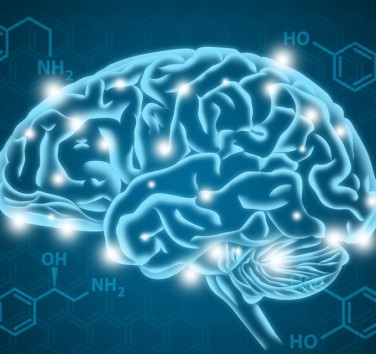In order to better understand how CBD acts on migraines, we will first describe migraine and what it involves, then we will make a connection with CBD by discussing the scientific studies carried out on it. the subject to finally give you our recommendations for the use of CBD to relieve migraine.
What is migraine?
Migraine is a very common neurological disease affecting approximately 15% of the world's population and can result in multiple symptoms. Migraine is most often characterized by intense, painful headaches. Symptoms may also include nausea, vomiting, difficulty speaking, numbness or tingling, and sensitivity to light and sound. Migraine affects people of all ages. The pain appears gradually, often on only one side of the brain. It can last several hours and be very disabling for daily life.
.jpeg)
Types of migraines
The diagnosis of migraines is determined based on clinical history, reported symptoms, and excluding other possible causes. The most common categories of migraines are:
-
Migraine attacks without aura: This is a moderate to severe headache (scientifically called headache), which lasts from 4 to 72 hours. These attacks are often associated with nausea, vomiting and/or hypersensitivity to light and noise. They are diagnosed after at least 5 appearances.
-
Migraine attacks with aura: These are attacks which are accompanied by a reversible neurological disorder, such as a visual, sensory, language and/or speech, or even a motor disorder.
Migraines may begin in childhood or may not occur until early adulthood. Women are more likely than men to have migraines. Family history is one of the most common risk factors for migraines.
Note that migraines are different from other headaches and should be treated as such. Today, unfortunately there is no cure for migraine, however, treatments to reduce the duration, intensity and frequency of the pain are available.
Causes of migraines
Migraines are complex headaches that can be triggered by a variety of factors. Although the exact cause of migraine is not yet fully understood, here are some of the most commonly identified causes:
- Genetic factors: Family history may increase the risk of migraines.
- Hormonal Imbalances: Hormonal changes, especially in women, can trigger migraines. For example, menstrual periods, pregnancy and menopause can influence the frequency of migraines.
- Foods and additives: Certain foods such as chocolate, mature cheeses, caffeine, as well as additives such as monosodium glutamate (MSG) can cause migraines.
- Drinks: Excessive caffeine consumption or withdrawal, as well as alcohol consumption, especially red wine, can trigger migraines.
- Stress: Stress at work or at home can cause migraines. Ditto for anxiety, depression and all factors related to mental health.
- Sensory stimuli: Bright lights, loud sounds and even certain smells can trigger a migraine attack.
- Sleep changes: Disrupted sleep, whether it's too much or too little sleep, can be a trigger.
- Weather conditions: Changes in pressure or temperature can trigger migraines in some people.
Existing treatments for migraine
The treatments can be classified into two categories for two interventions of different natures.
-
Treatments against the attack: They consist of two therapeutic drugs which are currently suggested by doctors to reduce the symptoms of migraine: anti-inflammatories non-steroidal drugs (NSAIDs) and triptans. Paracetamol is also an effective medication for less intense migraines.
-
Basic treatments : For people whose attacks are too long, frequent and intense without anything relieving them, there is a basic treatment, consisting of different powerful medications. Refer to your doctor for more information.
What is CBD?
Cannabidiol or CBD, is one of the 120 cannabinoids identified in cannabis. Once consumed, it acts on the body's receptors just like another better-known cannabinoid, Tetrahydrocannabinol or THC. Unlike THC, CBD produces a relaxing effect but does not have psychoactive effects. This means that it does not alter the state of consciousness in any way like drugs could.
But why is CBD so popular? CBD fascinates scientists and consumers alike because of its therapeutic virtues which have made this product a revolution. CBD is considered to have anticonvulsant, antipsychotic, anti-inflammatory, antioxidant and even antidepressant effects. It is particularly known to have very encouraging effects on certain severe forms of epilepsy and many other inflammatory diseases and chronic pain for which medicine cannot find a cure.
.jpeg)
CBD and migraine
According to studies published so far, while many experts advocate the use of CBD oil for migraines, there is still not enough evidence to prove that CBD oil treatment will be completely effective in relieving migraines. What scientists are sure of is that it can do no harm.
Researchers believe that the more research on the subject, the more we will be able to prove that CBD oil works well on brain pain and sufficiently to treat migraines. They add that CBD oil can absolutely help relieve some symptoms related to severe migraines or even prevent their occurrence.
The first and most significant study in this area was that carried out by a clinic in Colorado in 2016 on 121 patients and revealing a reduction in the frequency of seizures or even a complete disappearance in certain patients who had ingested therapeutic cannabis (including CBD ).
Moreover, a study published in 2018 in the Journal of Headache and Pain, animal tests support that the potential use of Cannabis and its components, including cannabidiol (CBD), relieve migraine pain.
There are few studies in this area, and you will understand that they are not yet sufficient to determine exactly how CBD relieves migraine pain. However, CBD has already convinced many medicinal areas, so it is only a matter of time before progress shows its effectiveness on migraine pain.
How to use CBD for migraine?
Taking CBD oil regularly can help you restore endocannabinoid tone, which could help reduce migraines. If this is your first time, we recommend starting with a low dose and gradually increasing. Keeping a journal to see if CBD is having an effect on your symptoms can also be very helpful.
Regarding the product, for migraines, it is recommended to turn to a CBD oil and consume it sublingually, or under the tongue, where it will be absorbed quickly and effectively. The quality of CBD is very important and influences its therapeutic quality on your migraines. The CBD oils offered on the French 321CBD store are all premium quality and approved by French legislation.
Although it is relatively non-toxic, CBD oil may cause side effects in some people, such as drowsiness, nausea, or diarrhea.
If you are being followed by a healthcare professional for your migraines and/or you are taking treatment, we strongly recommend that you tell them about your intention to take CBD so that they gives you a tailor-made opinion according to your situation.
Other forms of CBD to relieve migraines
If you don't like oils, we have other CBD-based products to offer you to soothe your migraines and improve your daily well-being.
- CBD Flowers: CBD flowers can be used in vaporization, infusion or in cooking. By vaporization, the effects appear almost instantly and can persist between 2 to 4 hours.
- CBD Resins: Similar to flowers in terms of use, they are often more concentrated. The effects are felt within minutes and last 2 to 4 hours.
- CBD oils: Taken under the tongue for rapid absorption or incorporated into food. The effect usually occurs between 20 minutes to 2 hours.
- CBD Food: The integration of CBD into various food products such as herbal teas, chocolate and honey is an excellent choice to soothe your daily ailments. The effect, due to digestion, may appear after 30 minutes to 2 hours.
- CBD e-liquids: Used in electronic cigarettes or vaporizers. The effects appear within a few minutes and last for 2 to 4 hours.
This variety of shapes allows each user to find the one that best suits their needs and preferences.
How to properly dose CBD in case of migraine?
Proper dosage of CBD is essential to maximize its benefits and minimize potential side effects. Since migraine is a condition that varies greatly from person to person, the dosage of CBD to relieve this pain will also be personal and may require some adjustment. Here are some tips to help you determine the right dosage:
- Opt for a low dose of CBD when you're starting out, especially if you have a migraine.
- If relief is not achieved after the first dose, consider slowly increasing the next dose.
- Keeping a journal of your dosages and frequency of migraines can help find the right balance.
- Remember that each form of CBD has its own rate of absorption, which can influence dosage.
- Listen to your body, because everyone reacts differently to CBD; adjust your dosage according to your feelings.
















